Top Five Proven Winners Annuals – 2024

This spring, during the 2024 gardening season, the good people of Proven Winners are introducing a new impressive selection of 75 annuals, perennials, and shrubs. Many are hardy for our Zone 3 climate. This propagation and plant breeding company is dedicated to travelling the world, sourcing and testing new plants. This takes many years – yes years - to bring you new and exciting plant selections. Many of the new test species do not meet up to their rigid cultural requirements with only a few becoming new introductions that are available every year. This article introduces you to my picks for the Top 5 New PW Annuals for 2024.
All five are not only unique and beautiful but do not need deadheading! They are all self-cleaning! And as always, plant in a top quality soil and provide good drainage.
Proven Winners Annual of the Year for 2024 is Supertunia Vista Jazzberry. This beauty has joined the impressive Supertunia Vista series. The flowers are a neon, knockout magenta pink with a very dark eye. These plants will produce non-stop blooms all season long into fall. Jazzberry is also exceptionally tough; standing up to rain, wind and heat.
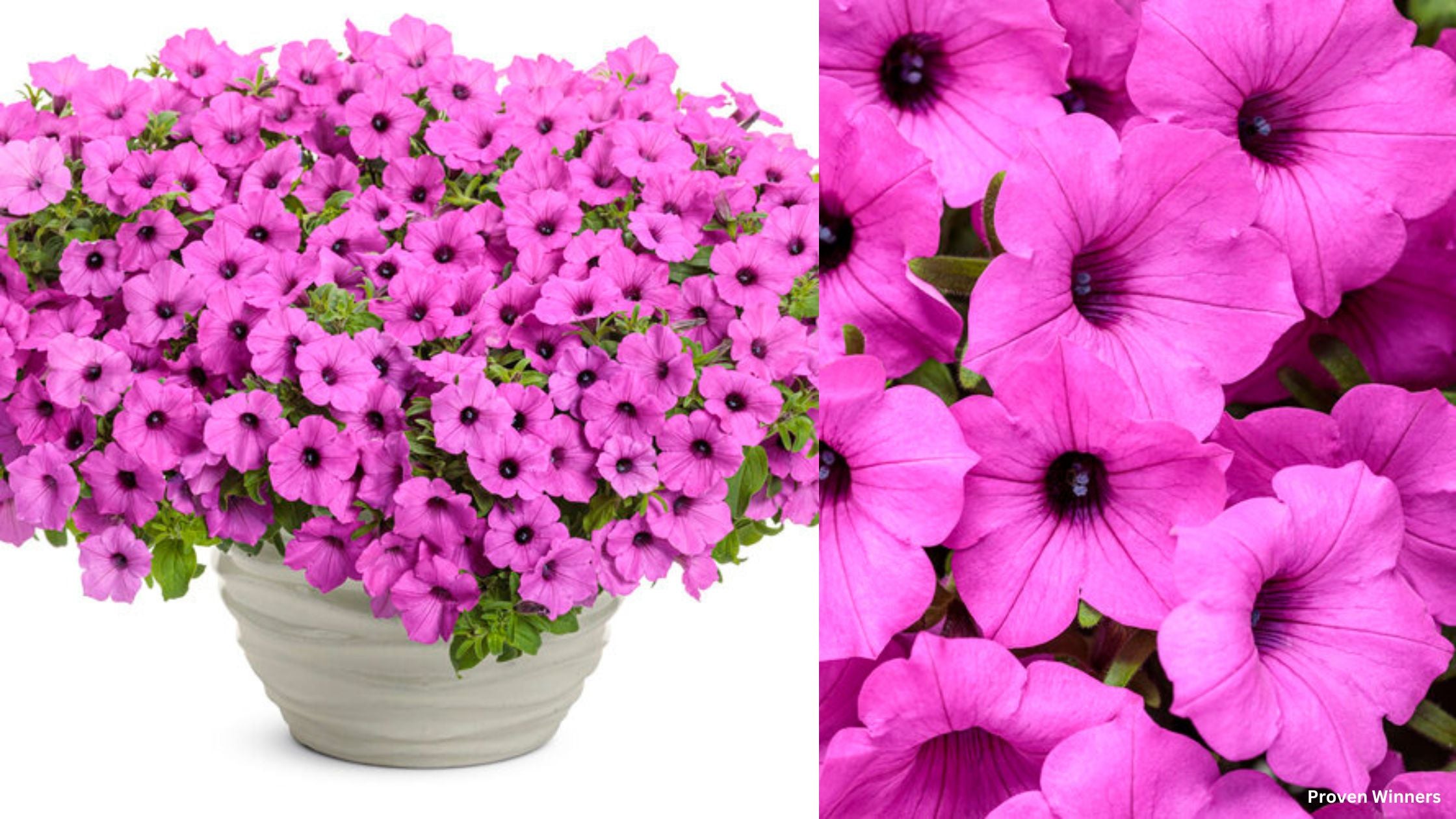
Height: 30 – 60 cm Spread: 60 – 90 cm Full to Part Sun
Fertilize with a balanced slow release flowering plant fertilizer once a month or a balanced water soluble fertilizer such as 20-20-20 every two weeks. Begin with half strength applications for the first month, then transition to full strength as the season progresses. Do not fertilize newly planted petunias for a week or two after planting.
Superbells Double Redstone – (Double Calibrachoa –Million Bells)
Part Sun to Sun location
This new, fully double, heat tolerant Calibrachoa is so unique, with brick red blooms edged in gold. Redstone is a very prolific bloomer, flowering all season into fall.
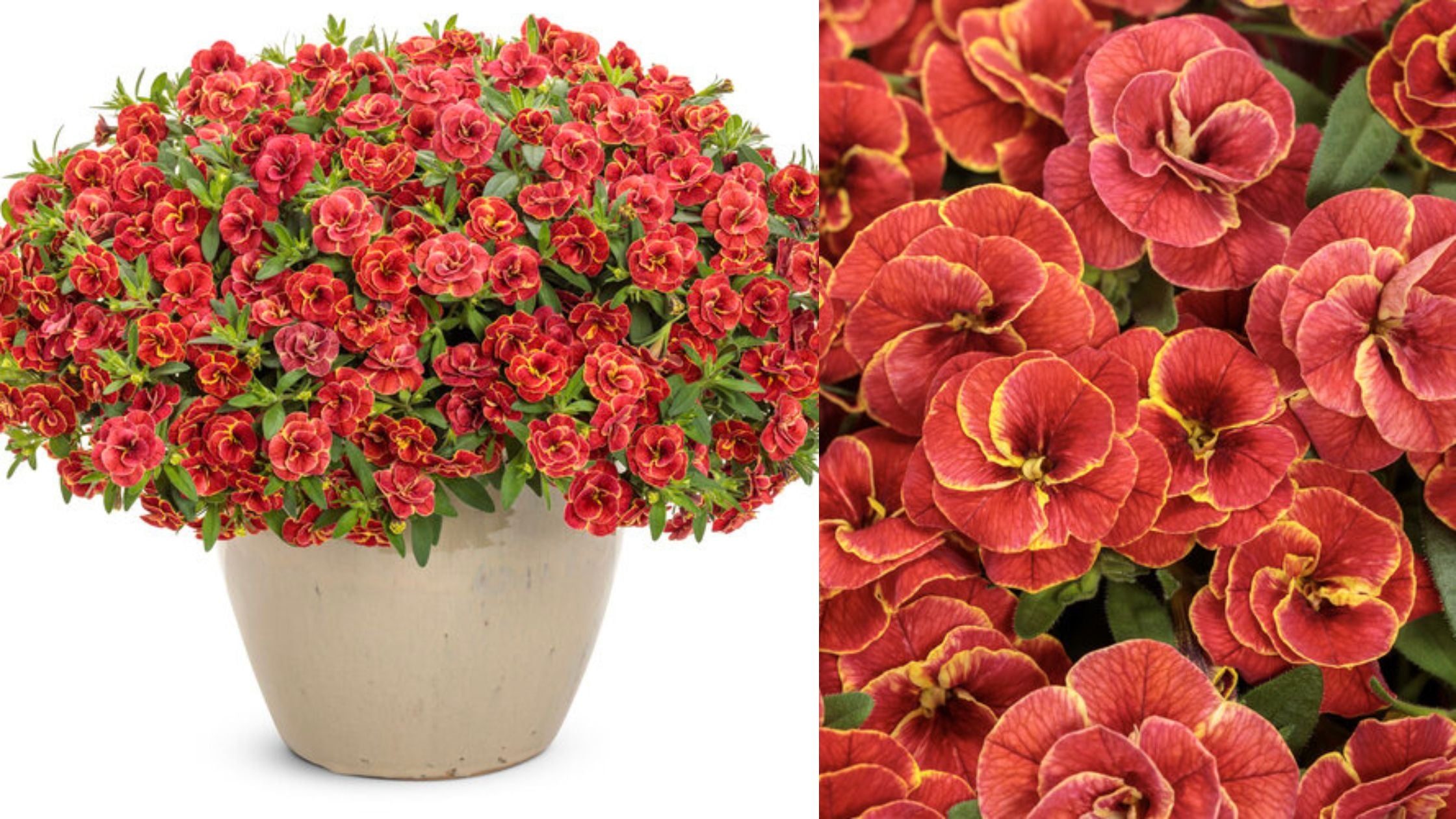
Height: 15 - 60 cm Spread: 30 - 60 cm
Use this Calibrachoa in window boxes, hanging baskets or upright mixed containers. It is very heat tolerant and attracts pollinators. Once established, fertilize every two weeks with a balanced water soluble flowering plant food.
Trim back Calibrachoa at planting time. This will encourage more branching and more blooms. If the plant looks tired in summer, time a good pruning with a fertilizer application to rejuvenate. Yes, this works and will give you lots of new long lasting blooms!
Yellow leaves may mean overwatering or lack of iron (the pH is too high or low). A quick fix to this is watering with chelated iron which is available to plants at a wider pH range.
Remember that Calibrachoa does not like constantly damp soil. I have made the mistake of not letting it dry out somewhat between waterings and have paid the price!
Supertunia Hoopla Vivid Orchid (a hybrid petunia)
Part Sun to Sun
Height: 10-30 cm Spread: 46 – 61 cm. Can trail up to 91 cm
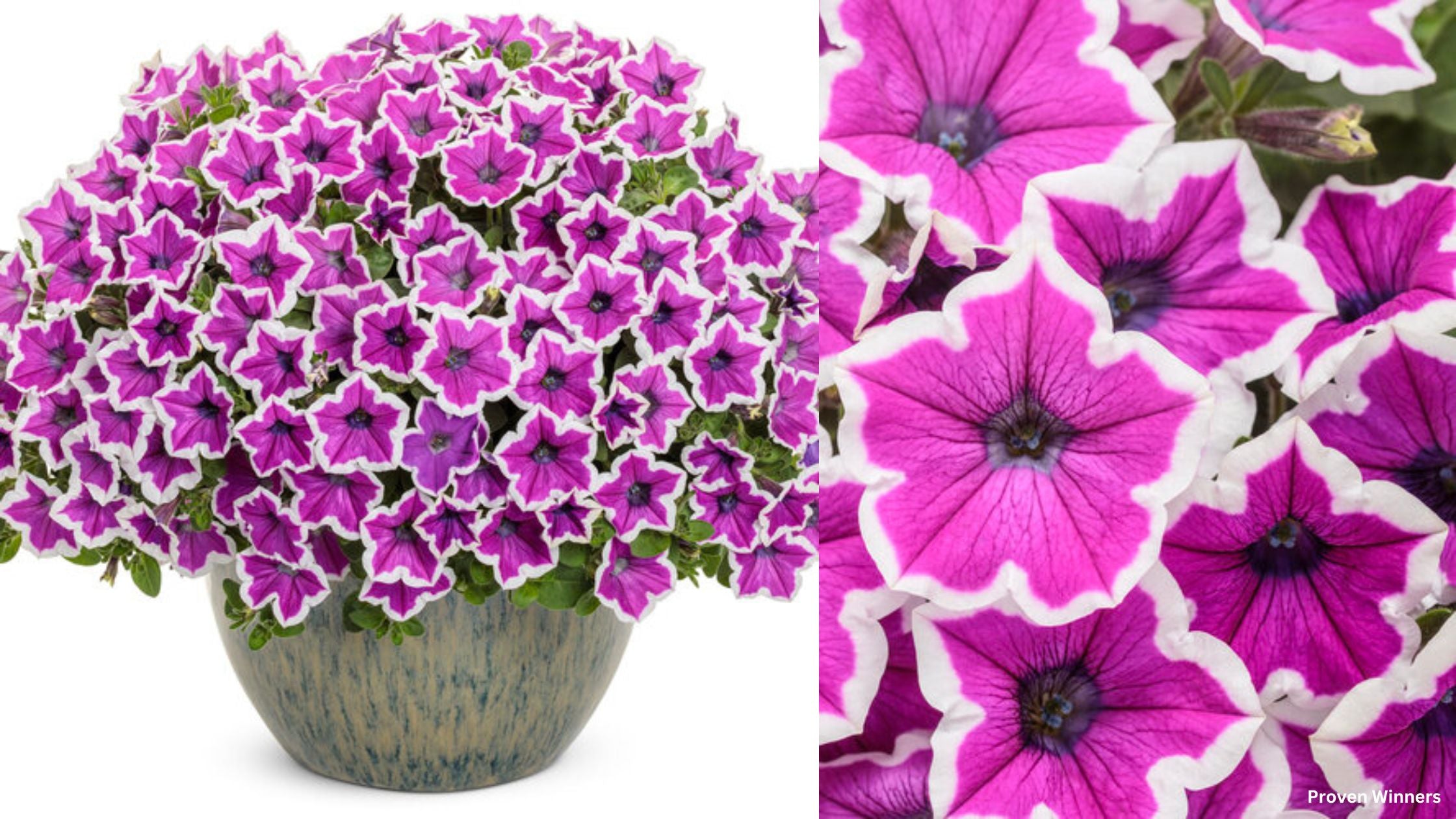
I usually am not a big fan of picotee petunias but this one is a real stunner. It has an impressive color pattern that stands out in any combination planting or on its own. The flowers are orchid purple with a crisp white edge. They are very heat tolerant and attract butterflies and hummingbirds. This is an ideal plant to use as a border planting but I can see it being a favorite to use in containers. You can add slow release flowering plant fertilizer to the soil at time of planting or a flowering plant water soluble fertilizer every two weeks in container plantings.
If the plant starts to look tired, fertilize and trim back by no more than a third of its volume and within a week, it will start to bounce back.
Bidens Campfire Marshmallow – Pure white flowers with yellow centres. They are larger blooms than Bidens Campfire Flame.
This is a vigorously growing bidens that is heat tolerant and once established, can tolerate some drought stress.
Part sun – Sun location
Blooms spring, summer, and fall. If used in containers fertilize every two weeks with a balanced water soluble flowering plant fertilizer. If used in the landscape, an application of slow release flowering plant fertilizer at planting and once in the summer is all it needs.
Height: 20-36 cm Spread: 41 -51 cm
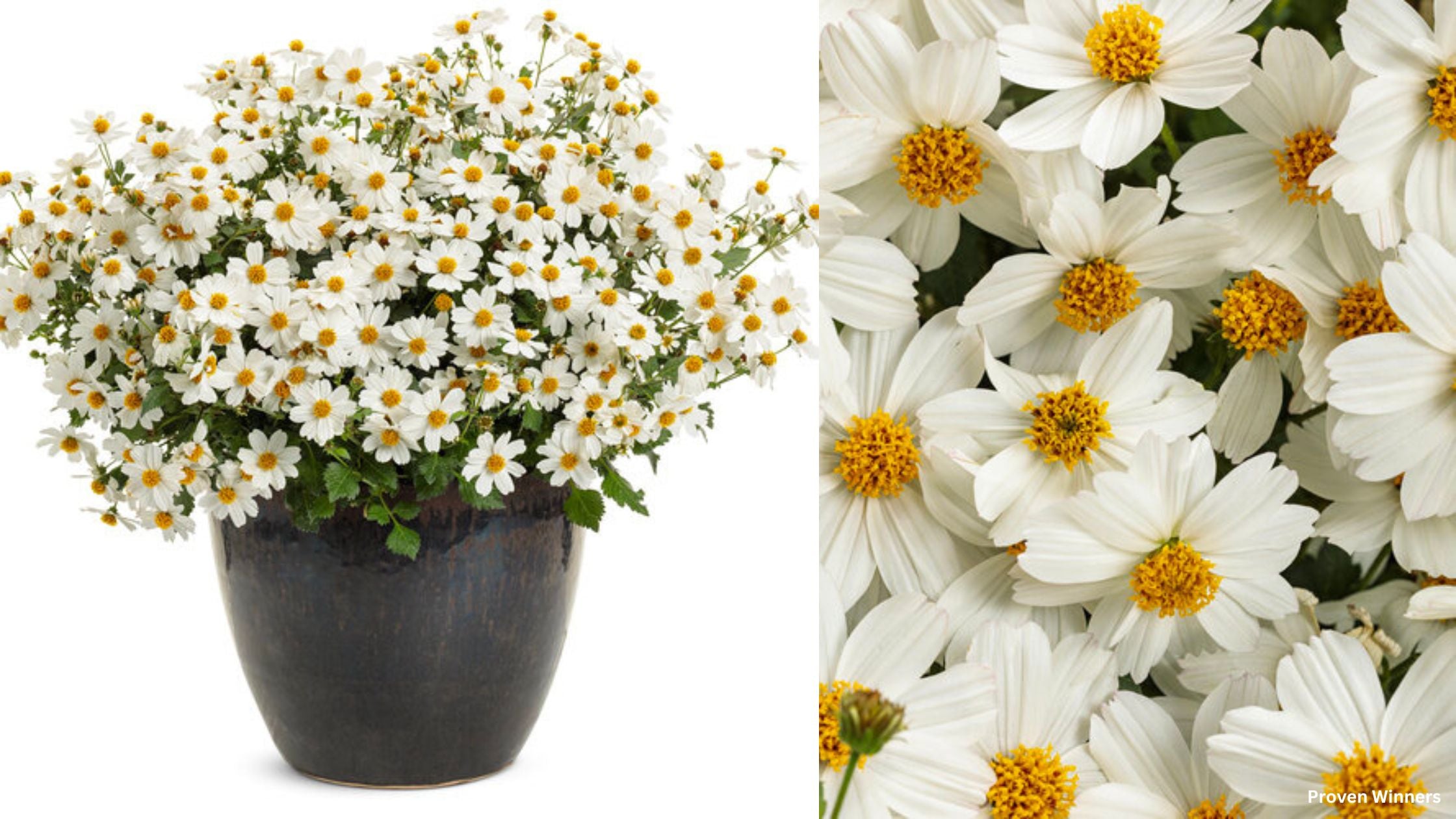
Attracts pollinators such as bees.
This plant, when used in combination with other annuals, makes other colors pop with its pure white flowers. Bidens Campfire Marshmallow is very versatile and can be used in hanging baskets, combination planters and window boxes.
Superbena Pink Cashmere (a Verbena hybrid)
Part Sun to Sun location
Blooms in spring, summer and fall. The large flower umbels are beautiful pastel pinks of different shades and attract pollinators such as bees and butterflies.
Height: 15 – 30 cm Spread: 45 – 75 cm. Trails up to 61 cm
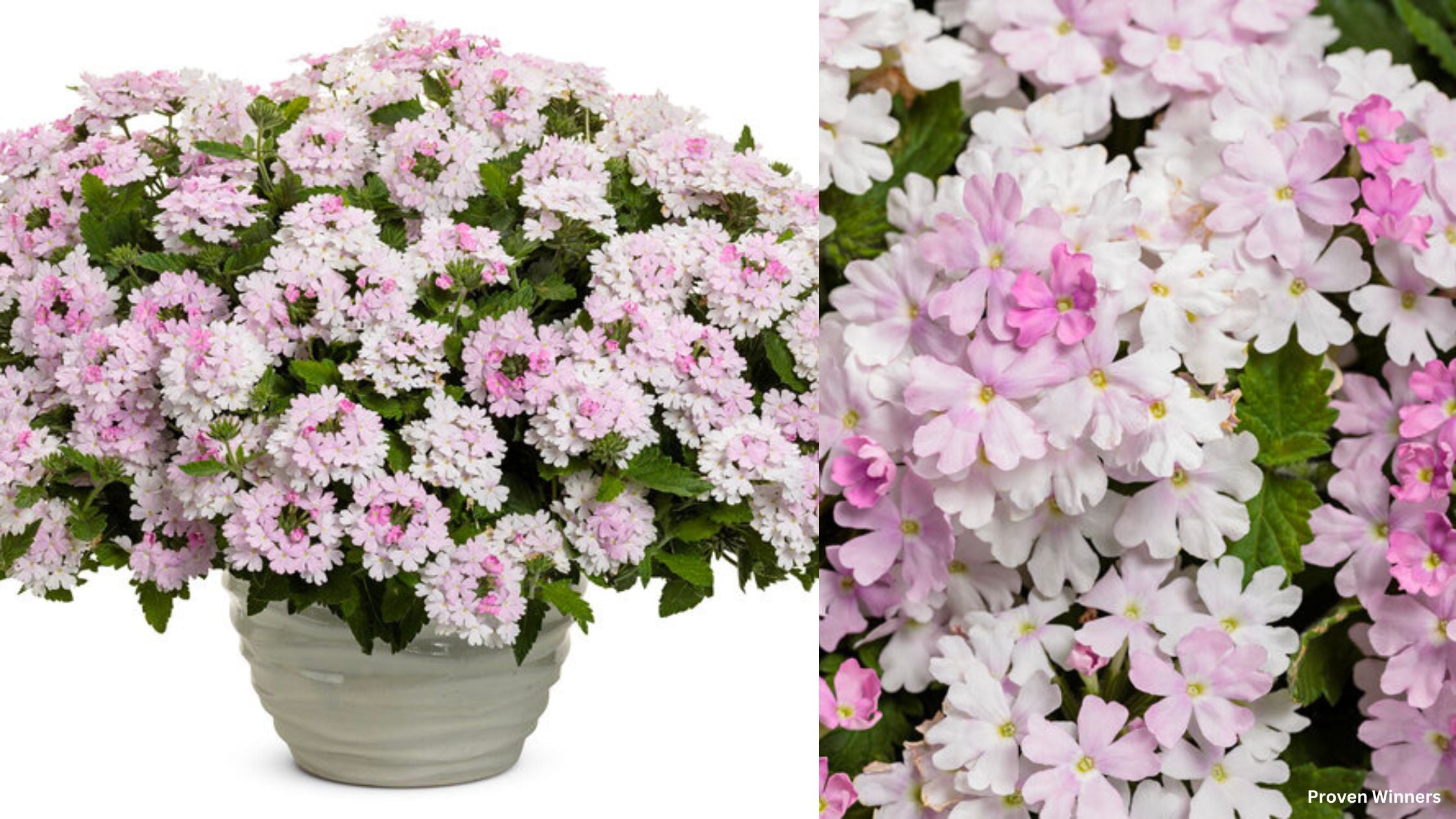
Pink Cashmere is a very vigorous grower with exceptional branching. Performs great in hanging baskets. It is also powdery mildew resistant and deer resistant.
In container recipes, pair this Verbena with other heat tolerant dark purple, fuchsia pink and dark blue flowering plants.
Begin to fertilize once every two weeks after planting with a balanced water soluble flowering plant fertilizer.
Tired looking plants can be trimmed back in summer by 1/3 the volume of the plant. Try to time your pruning with an application of fertilizer.
Supertunia Mini Vista Ultramarine (a Petunia hybrid)
Part Sun to Sun
Another new introduction for 2024 is Supertunia Vista Ultramarine with impressive deep, dark royal purple mini blooms. Ultramarine is another prolific bloomer that flowers all season into late fall and tough as nails. You cannot go wrong using the Supertunia Vista series in your landscape and containers.
Height: 15 – 30 cm Spread: 45 - 60 cm Trails up to 60 cm.

Use this stunning mini petunia with silver, pinks, reds, white and oranges in combination hanging baskets and planters.
Once established, Vista Ultramarine is heat and drought tolerant. The blooms attract bees, butterflies and hummingbirds.
If used in borders and edging, use a slow-release flowering plant fertilizer when planting and two more times during the growing season. In containers, I find it more beneficial to all plants if you use a flowering plant water soluble fertilizer every two weeks after planting. The water/fertilizer travels to all areas of the root zone.
Trim back by about 20 percent of the plants volume when needed or once in July and once in August. Time your pruning with an application of fertilizer.
Check out all the new Annuals for 2024 on the Proven Winners website and their awesome recipes for container planting!
